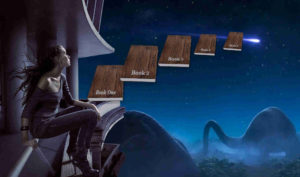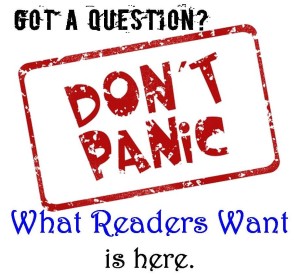 Common wisdom has it that, as an Indie, it’s a good idea to write a series. You price the first book as free or $.99 and set the rest at a regular price. Once readers are hooked, you can pretty well count on them to buy the others. Loyal customers and all that. But inherent in the multi-book series, you have two main problems. Continue reading “Writing a Series: Pitfalls and Solutions”
Common wisdom has it that, as an Indie, it’s a good idea to write a series. You price the first book as free or $.99 and set the rest at a regular price. Once readers are hooked, you can pretty well count on them to buy the others. Loyal customers and all that. But inherent in the multi-book series, you have two main problems. Continue reading “Writing a Series: Pitfalls and Solutions”
Tag: book series
What Readers Want – Series vs. Standalone Books
 As an author, do you ever struggle with a decision about your book and wonder, “What would a reader say?” You probably aren’t the first author to wonder about that same thing. Indies Unlimited has two reviewers on our staff, the fabulous Cathy Speight and venerable Mr. BigAl, who are here representing readers. In this series, we’ll pose your questions to them for their take and encourage other readers to weigh in with their thoughts.
As an author, do you ever struggle with a decision about your book and wonder, “What would a reader say?” You probably aren’t the first author to wonder about that same thing. Indies Unlimited has two reviewers on our staff, the fabulous Cathy Speight and venerable Mr. BigAl, who are here representing readers. In this series, we’ll pose your questions to them for their take and encourage other readers to weigh in with their thoughts.
First the question from the author: Continue reading “What Readers Want – Series vs. Standalone Books”
How Can You Tell if a Book Is Part of a Series or Serial?
 I’ve been cranky lately. For the second time in several months, I’ve picked up a book that I have enjoyed and was anxious to get to the climax of, only to find at the very end NO climax and a “to be continued” with an ad to buy the next book in the series. I’m not averse to a continuing story, I’m just not happy to find out that’s what I’ve got after I’ve read the entire book and was looking for a satisfying resolution. In checking back with the book descriptions, I did not find any clear evidence that these books were only part of the larger story. Yes, they say they’re a series; no, they don’t say you have to read them all to get the full story. Continue reading “How Can You Tell if a Book Is Part of a Series or Serial?”
I’ve been cranky lately. For the second time in several months, I’ve picked up a book that I have enjoyed and was anxious to get to the climax of, only to find at the very end NO climax and a “to be continued” with an ad to buy the next book in the series. I’m not averse to a continuing story, I’m just not happy to find out that’s what I’ve got after I’ve read the entire book and was looking for a satisfying resolution. In checking back with the book descriptions, I did not find any clear evidence that these books were only part of the larger story. Yes, they say they’re a series; no, they don’t say you have to read them all to get the full story. Continue reading “How Can You Tell if a Book Is Part of a Series or Serial?”
When Is a Serial Just a Tease?
 The serial has had a long and distinguished career in the annals of publishing. Its heyday, arguably, was the 19th century. That’s when a host of factors – a more literate public, improved printing techniques, and better distribution – came together to create a market for popular weekly and monthly publications. Editors had to fill the paper or magazine somehow, and often turned to writers of fiction, who would then write a segment of a continuing story for each new edition. A surprising number of books that we consider classics today first appeared in installments, among them Dickens’ The Pickwick Papers, Dumas’ The Count of Monte Cristo, Tolstoy’s Anna Karenina, and Uncle Tom’s Cabin by Harriet Beecher Stowe.
The serial has had a long and distinguished career in the annals of publishing. Its heyday, arguably, was the 19th century. That’s when a host of factors – a more literate public, improved printing techniques, and better distribution – came together to create a market for popular weekly and monthly publications. Editors had to fill the paper or magazine somehow, and often turned to writers of fiction, who would then write a segment of a continuing story for each new edition. A surprising number of books that we consider classics today first appeared in installments, among them Dickens’ The Pickwick Papers, Dumas’ The Count of Monte Cristo, Tolstoy’s Anna Karenina, and Uncle Tom’s Cabin by Harriet Beecher Stowe.
Amazon instituted a program in 2012 that was intended to bring back the serial novel. With Kindle Serials, readers pay upfront for the whole book, and installments are delivered to the customers’ devices as they become available. (Don’t bother looking for information on submissions; they’re not taking any right now.) Continue reading “When Is a Serial Just a Tease?”
